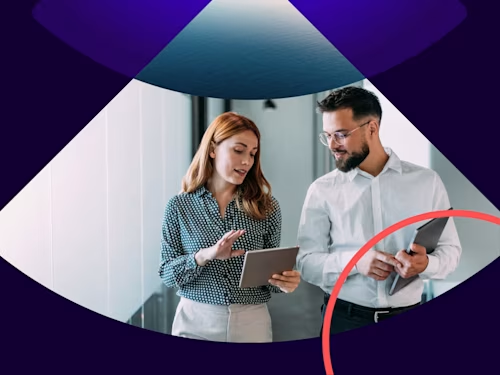
How to write a letter of intent?
Our platform makes it simple to outline your intentions and achieve a common understanding with your recipient.

What is a letter of intent, and what is its purpose?
A letter of intent (LOI or LoI) is a formal document used to express interest in a business transaction or partnership between two or more parties. A letter of intent could be used when you're seeking to establish a joint venture or an association, exploring a potential acquisition or initiating a collaboration. A letter of intent can also demonstrate the plan to fund or invest in another business or entrepreneur. The letter of intent comes before establishing a formal contract.
A well-written letter of intent can set the stage for productive negotiations. A letter of intent is not recognised as a legally binding contract. You may state elements of a letter of intent that are legally binding, such as a confidentiality clause. This guide will cover how to write a letter of intent.
Understand the Purpose and Scope
Begin by clearly defining the purpose and scope of your business letter of intent. A clear understanding of what you want to achieve will help you structure your letter effectively and ensure that your intentions are communicated clearly to the recipient. You should identify the key goals, expectations, and terms you wish to address in the letter of intent. It's important to remember that a letter of intent is not a substitute for a legally binding contract, which you should have in place before beginning work.
Format and Structure of the Letter of Intent
Use a Letter of Intent Template
You should follow a professional and standard business letter format for your LOI. Include a professional heading with your name, address, contact details, and the date. Organise your letter of intent into clear and concise paragraphs. In the opening paragraph, introduce yourself and your organisation, and state the purpose of the letter.
Subsequent paragraphs provide detailed information about the transaction or partnership, including each party's key terms, conditions, and expectations. You can create a letter of intent template using Docusign eSignature.
Introduction
In the body of your letter, provide relevant background information about your organisation and its accomplishments. Highlight your expertise and unique selling points that make your organisation an ideal partner. Define both parties and a broad basis of your intended relationship and the potential transaction in basic detail. You should clearly outline that this is 'subject to contract'.
Pre-Conditions
Clearly outline the terms and conditions you propose for the business transaction or partnership. Ensure you cover essential elements such as timelines, responsibilities, financial considerations, and specific requirements or expectations. Pre-conditions might include producing key documents, such as safety or patent certifications. What is regularly included is the intention for each party to undertake a due diligence exercise before creating a legally binding contract. This covers any actions that must be conducted prior to moving forward with negotiations. This section lays the foundation for further negotiations and sets the tone for future discussions.
Timeframe and closing date
Give a timeframe that each party has to perform the pre-conditions outlined. A letter of intent lasts as long as the negotiations between the parties need to. However, giving a closing date is common and suggests the timeframe in which parties expect to end the communications.
Legally binding or not legally binding clauses
You should include a clear statement that the agreement is not legally binding, but there may be legally binding clauses you wish to add to a letter of intent, including:
Confidentiality - creating lawfully enforceable obligations of confidentiality or 'non-disclosure' between parties
Non-solicitation - preventing each party from poaching the other's employees
Exclusivity - preventing parties from negotiating with anyone else for a period of time; it should include a reasonable time limit.
Provisions for non-completion - outlining compensation if one party does work to progress the deal
Express Commitment and Next Steps
Conclude your letter of intent by expressing your commitment and enthusiasm for the potential partnership or transaction. Highlight the benefits and synergies that can be achieved by working together. Briefly outline the next steps you propose, such as scheduling a meeting or requesting further information. The letter of intent needs to be signed by both parties. If you used Docusign eSignature to securely sign documents electronically to create the template of your letter of intent, this can immediately be sent to all parties.
Letter of Intent vs Memorandum of Understanding: what is the difference?
At first glance, there are no major differences between a letter of intent and a memorandum of understanding. They come both before the creation of a formal contract.
However, the main difference lies in the fact that the letter of intent is intended more to give confidence to a sub-contractor to start working together on a project, whereas the memorandum of understanding is intended to specify the scope and purpose of the negotiations underway before finalising the terms of the agreement..
Finally, a letter of intent may carry less weight in court than a memorandum of understanding.
Are letters of intent legally binding?
Letters of intent are not legally binding, but specific clauses or terms within the letter can be legally enforceable.
Start writing your letter of intent
By understanding your LOI's purpose, structuring it appropriately, providing relevant background information, outlining pre-conditions, and expressing commitment, you are well-equipped to create letter of intent that will help progress negotiations. Try Docusign eSignature for free and explore its features to streamline your document signing process.
This article is not intended to provide legal advice, and Docusign is not a law firm. Docusign recommends getting legal input for advice on contracts.
Related posts
Docusign IAM is the agreement platform your business needs



